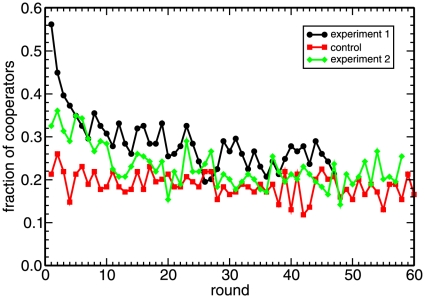Figure 1. The cooperation level declines to a low but non-zero level.
Fraction of cooperators in every round of the three parts of the experiment (in the first and the last ones players remain in the same node of the lattice along the whole experiment, whereas in the control part players are shuffled every round). Players are arranged in a  lattice with periodic boundary conditions, and play a PD game with each of its 8 surrounding neighbors in the lattice. With the notation C for cooperation, D for defection, and
lattice with periodic boundary conditions, and play a PD game with each of its 8 surrounding neighbors in the lattice. With the notation C for cooperation, D for defection, and  for the payoff obtained by a player who plays X against an opponent who plays Y, the payoff matrix of each of these PD games is
for the payoff obtained by a player who plays X against an opponent who plays Y, the payoff matrix of each of these PD games is  cents of a euro,
cents of a euro,  cents,
cents,  cents, and
cents, and  cents. These payoffs conform a weak PD game —the most favorable to promote cooperation— because
cents. These payoffs conform a weak PD game —the most favorable to promote cooperation— because  . This setup is entirely similar to that of Nowak and May's simulations [5] except for the size of the lattice (simulations are performed on
. This setup is entirely similar to that of Nowak and May's simulations [5] except for the size of the lattice (simulations are performed on  lattices, with
lattices, with  ) and the lack of self-interactions (see [17] for further comments).
) and the lack of self-interactions (see [17] for further comments).

